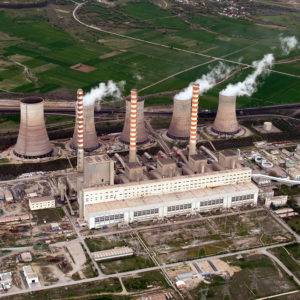Editor’s Note: For another viewpoint, see Counterpoint: Oil and Gas Production on Public Lands Is Good for the U.S. and the World
Hidden from public view, the fossil fuel industry and a complicit federal government are aggressively working to make America’s shared public lands a primary engine for unregulated climate pollution, when instead these lands can be a critical part of addressing the climate crisis.
More than 20 percent of the nation’s total greenhouse gas emissions comes from oil, gas and coal development from public lands.
The most recent United Nations report found that to be on track to limiting the global temperature rise to 1.5 degree Celsius above pre-industrial levels, we need to go even further than the Paris commitments and drastically cut global emissions in half. As the world’s second-largest emitter of greenhouse gases, the United States has an indisputable responsibility to act.
As daunting as this may seem, solutions are right at our fingertips. Elected leaders in the United States have the power to reduce immediately emissions tied to energy development on the nation’s array of public lands. They also have the power to keep conservation protections in place, as well as expand them, to allow these lands, waters and wildlife to persevere in the face of climate change.
We crunched the numbers, and the data confirm some of our worst fears. A recent report by The Wilderness Society found that public lands and waters leased by the industry in the last three years could produce as much as 5.9 billion metric tons of carbon-dioxide equivalent, more than half of the annual emissions of China — the world’s worst emitter.
In addition, the Trump administration has in total offered 461 million acres of American public lands and waters for the development of oil and gas — an area bigger than the state of Alaska.
At the same time, the administration is doing everything in its power to keep the public completely in the dark on the effects of its rampant oil and gas leasing program. From drastically limiting the public’s rightful opportunity to provide input, to not providing meaningful climate emissions information, to even controlling how the public is able to access information.
What will these decisions mean for future generations? Scientists predict we’ll see a deepening of the severe climate change effects we are already experiencing. From sea-level rise threatening the Everglades, and Glacier National Park’s glaciers receding, to mountain snowpack vanishing, and extreme wildfire seasons devastating the west.
If there is good news, it’s that more and more leaders — including most presidential candidates — are coming out in support of proposals to protect public lands and use them for climate good. Such proposals include conserving 30 percent of America’s lands and oceans by the year 2030, reducing carbon emissions from public lands and increasing responsible renewable energy development.
Instead of exploiting our public lands for every last barrel of oil, ton of coal or cubic foot of natural gas, we should be working to thoughtfully unwind fossil energy development and put these lands to work for their climate and conservation benefit.
Science and our own moral compass demand that America has a plan for our public lands. We need a plan that protects and restores vitally important lands and waters. And we must invest in strengthening our ecosystems and wind down fossil energy development so that public lands store more carbon than they emit.
We need to take advantage of the abundant opportunities on public lands to capture geothermal, wind and solar energy in ways that safeguard wildlife and wild lands. And public leaders must ensure that all people, especially the communities most affected by the sources and effects of climate change, have a voice and access to the benefits of nature and public lands.
As humanity faces such a monumental crisis, the United States has the power to ensure that our shared parks, forests and other public lands are working for us, not against us, in the fight against climate change.

